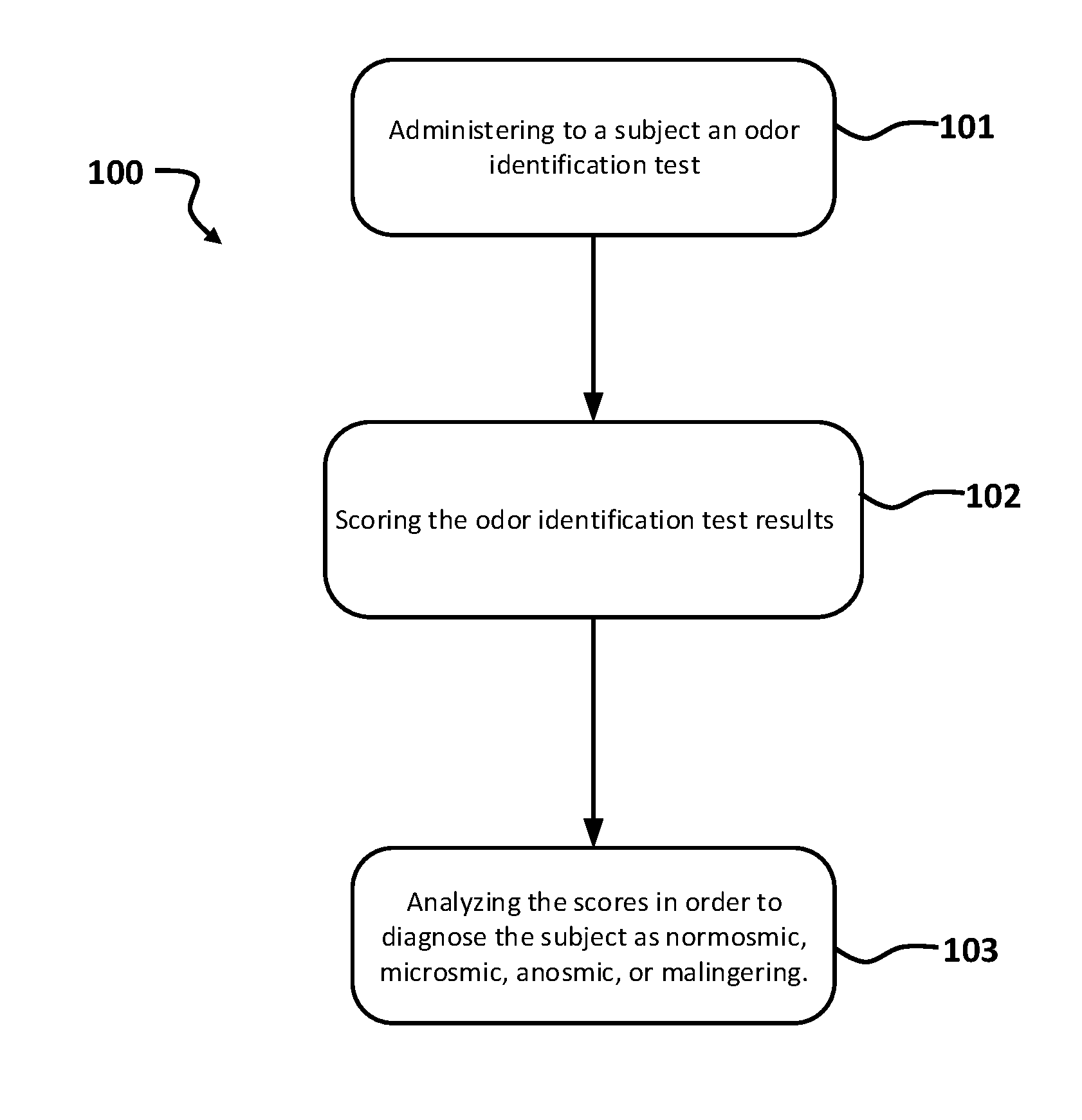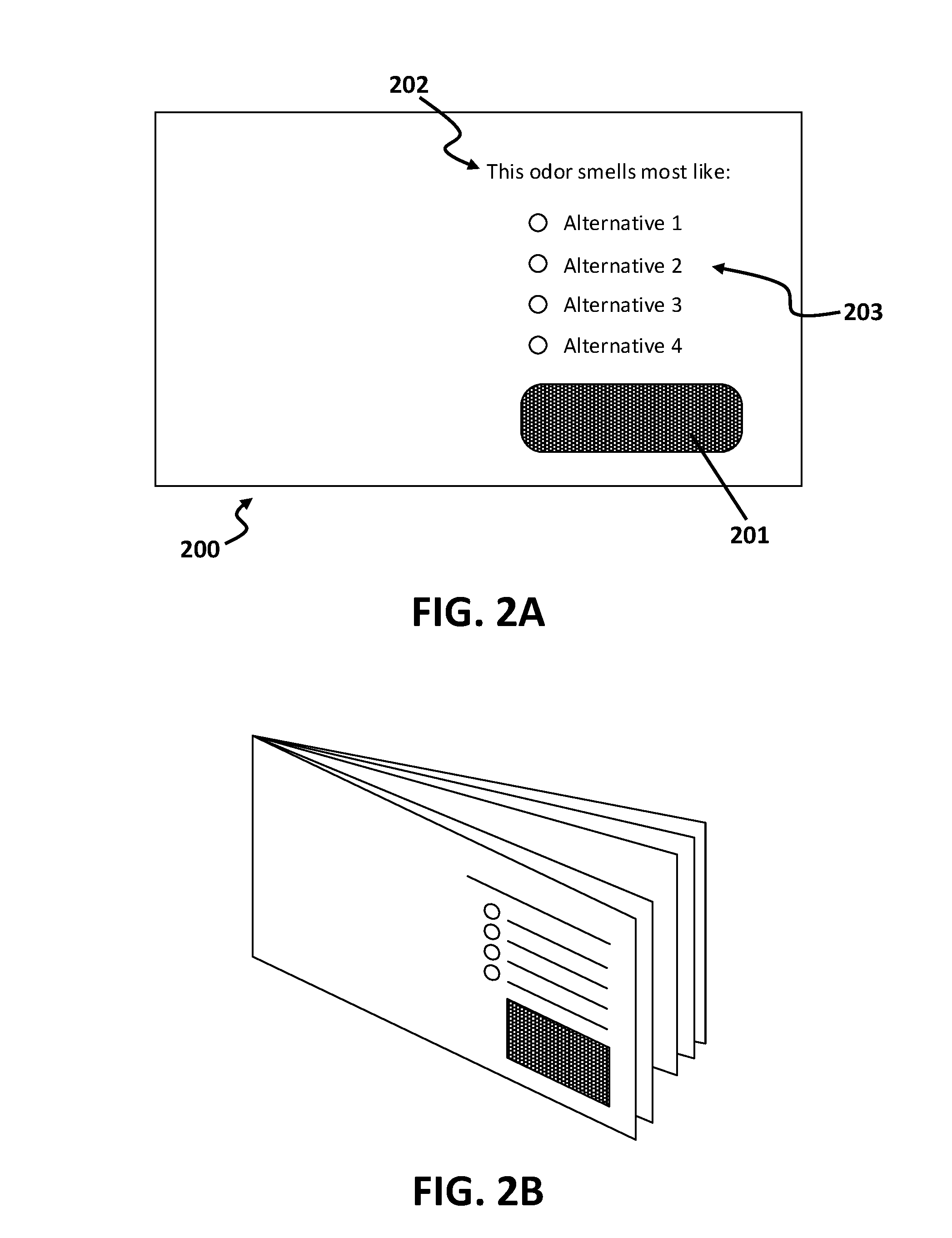Detecting olfactory malingering
- Summary
- Abstract
- Description
- Claims
- Application Information
AI Technical Summary
Benefits of technology
Problems solved by technology
Method used
Image
Examples
example 1
Conducting One Forced-Response Odor Identification Test
[0103]FIG. 6 shows an example of alternatives for each question. In the figure, the correct answer to each question is identified by the word “odor,” followed by a number that designates one of the 5 odorants. For example, referring to FIG. 6, the correct answer to question 1 is odor 1, and the correct answer to question 8, is odor 3. In an aspect, for each odorant there may be two types of questions. In each of the two types, the list of alternative choices includes the correct answer, and 3 alternative choices. The 3 alternative choices are wrong alternatives or distracters. The two types present respectively different wrong alternatives. The wrong alternatives for each odorant are designated in FIG. 6 by letter D followed by the corresponding odorant number.
[0104]Referring to FIG. 6, all wrong alternatives for odorant 1 are designated as D1; all wrong alternatives for odorant 2 are designated as D2; all wrong alternatives for...
example 2
Scoring the Odor Identification Test
[0106]Upon receiving all of the subject's answers to all the questions in the odor identification test, for example, as described above, operations such as the FIG. 1 operations 102 can score the subject's answers. In an aspect, the test results are scored based on a set of criteria. In this criteria include a number of correct answers criterion, distribution of correct answers criterion, number of consecutive correct answers criterion, position of the first correct answer criterion, distribution of correct answers for a specific odorant criterion, and number of similar wrong answers chosen for a specific odorant criterion.
[0107]FIG. 7 illustrates the answer sheet of an exemplar subject. In this figure, the question numbers are presented in columns labeled as “Question” and the answers provided by the subject are presented in columns labeled as “Answer”. As described above, FIG. 6 illustrates how the alternatives are designed for each question. Ba...
example 3
Classifying the Subject Based on the Scores
[0113]Table 4 shows example scores of the subject's answers, as discussed in reference to connection with Example 2, along with the reference ranges defined for each criterion. As can be seen in this table, the subject has performed within the reference ranges for criteria of number of correct answers, distribution of correct answers, distribution of correct answers for a specific odorant, and number of similar wrong answers chosen for a specific odorant. The subject, according to results presented in this table, has failed the criteria of number of consecutive correct answers and the position of the first correct answer.
[0114]If the classification were based solely on the number of correct answers, such the known UPSIT, the subject would be diagnosed as anosmic. However, operations according to this disclosure also score the subject's responses according to at least one answer pattern criterion. Example answer pattern criteria, as describe...
PUM
 Login to View More
Login to View More Abstract
Description
Claims
Application Information
 Login to View More
Login to View More - R&D
- Intellectual Property
- Life Sciences
- Materials
- Tech Scout
- Unparalleled Data Quality
- Higher Quality Content
- 60% Fewer Hallucinations
Browse by: Latest US Patents, China's latest patents, Technical Efficacy Thesaurus, Application Domain, Technology Topic, Popular Technical Reports.
© 2025 PatSnap. All rights reserved.Legal|Privacy policy|Modern Slavery Act Transparency Statement|Sitemap|About US| Contact US: help@patsnap.com



